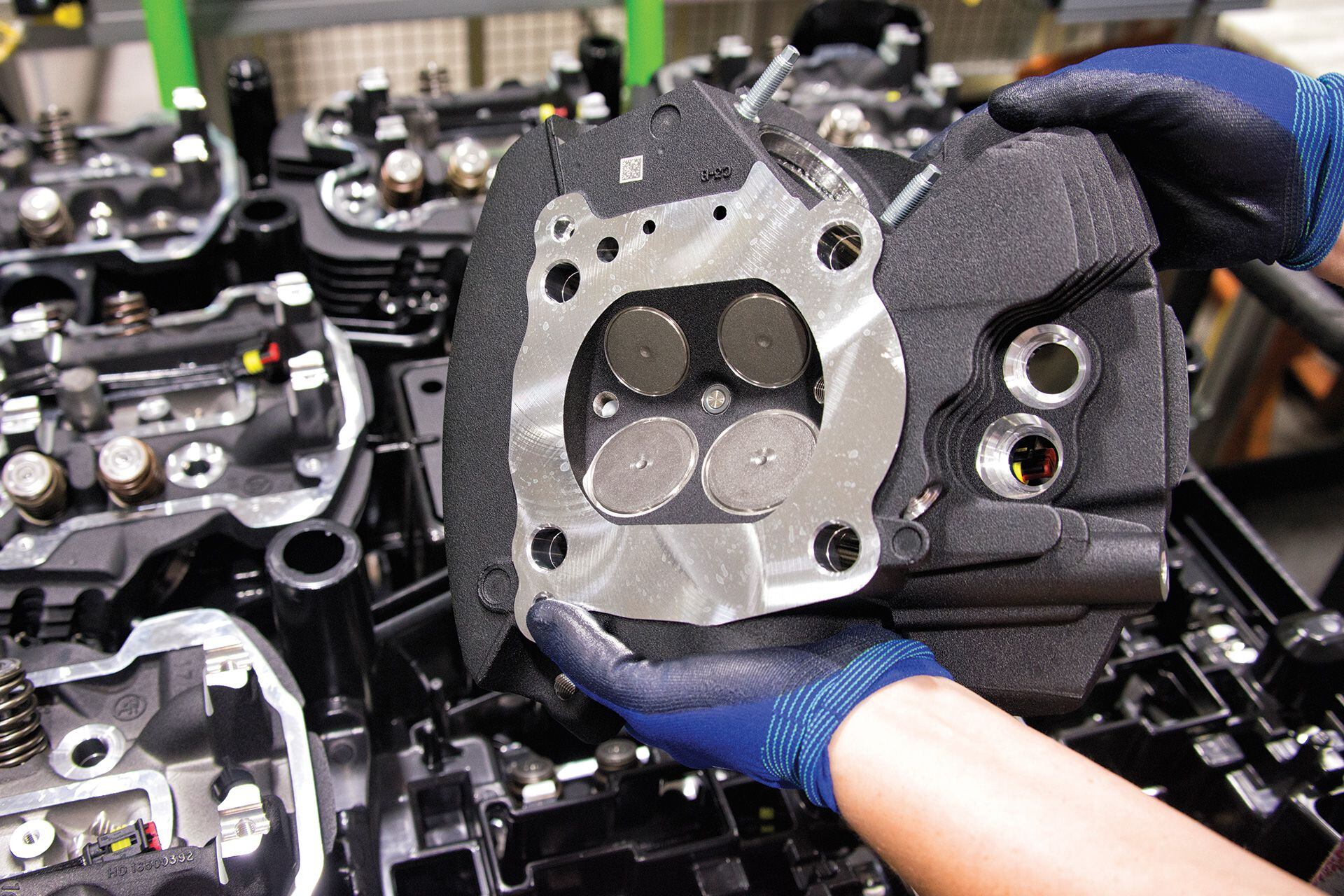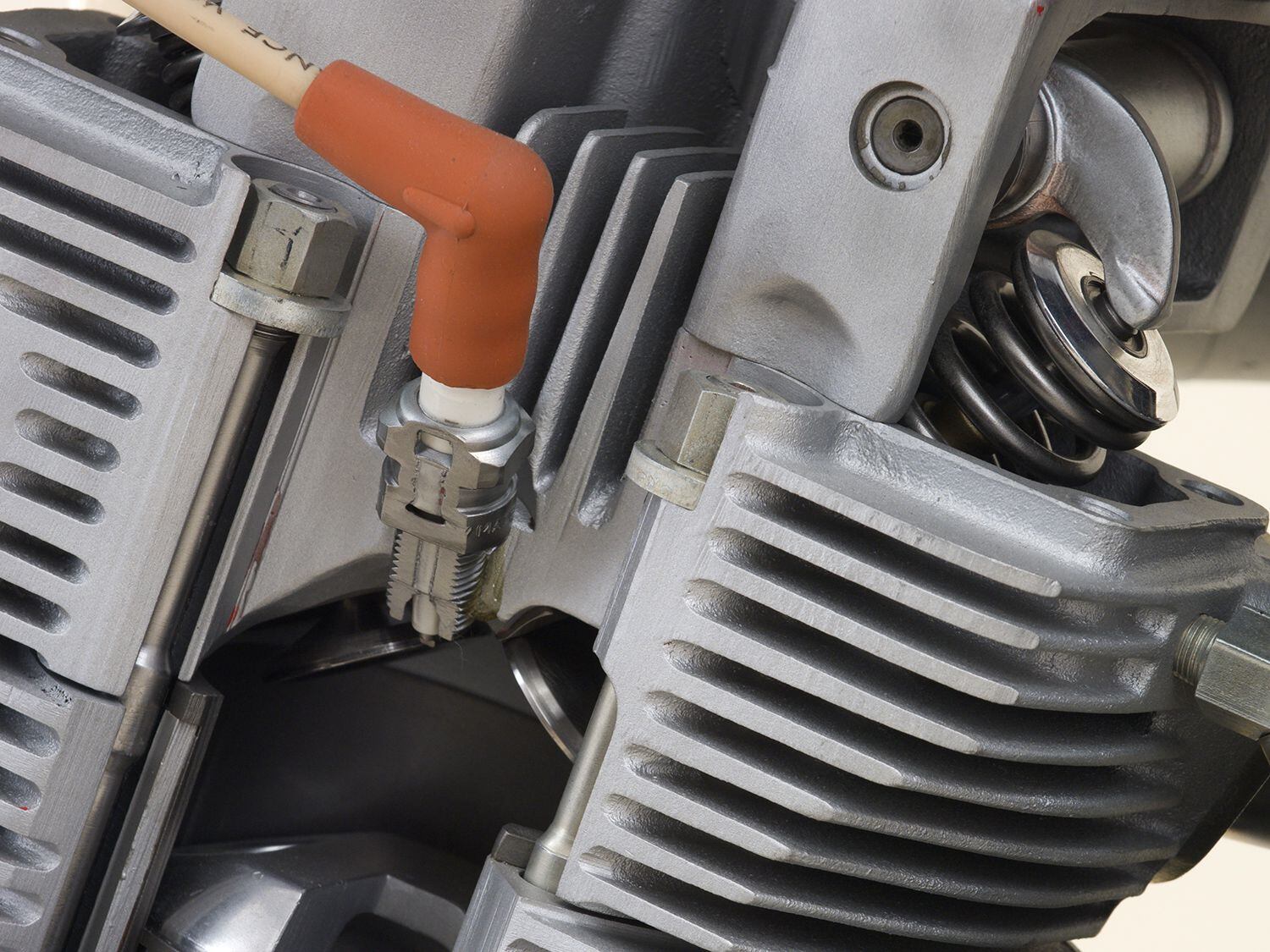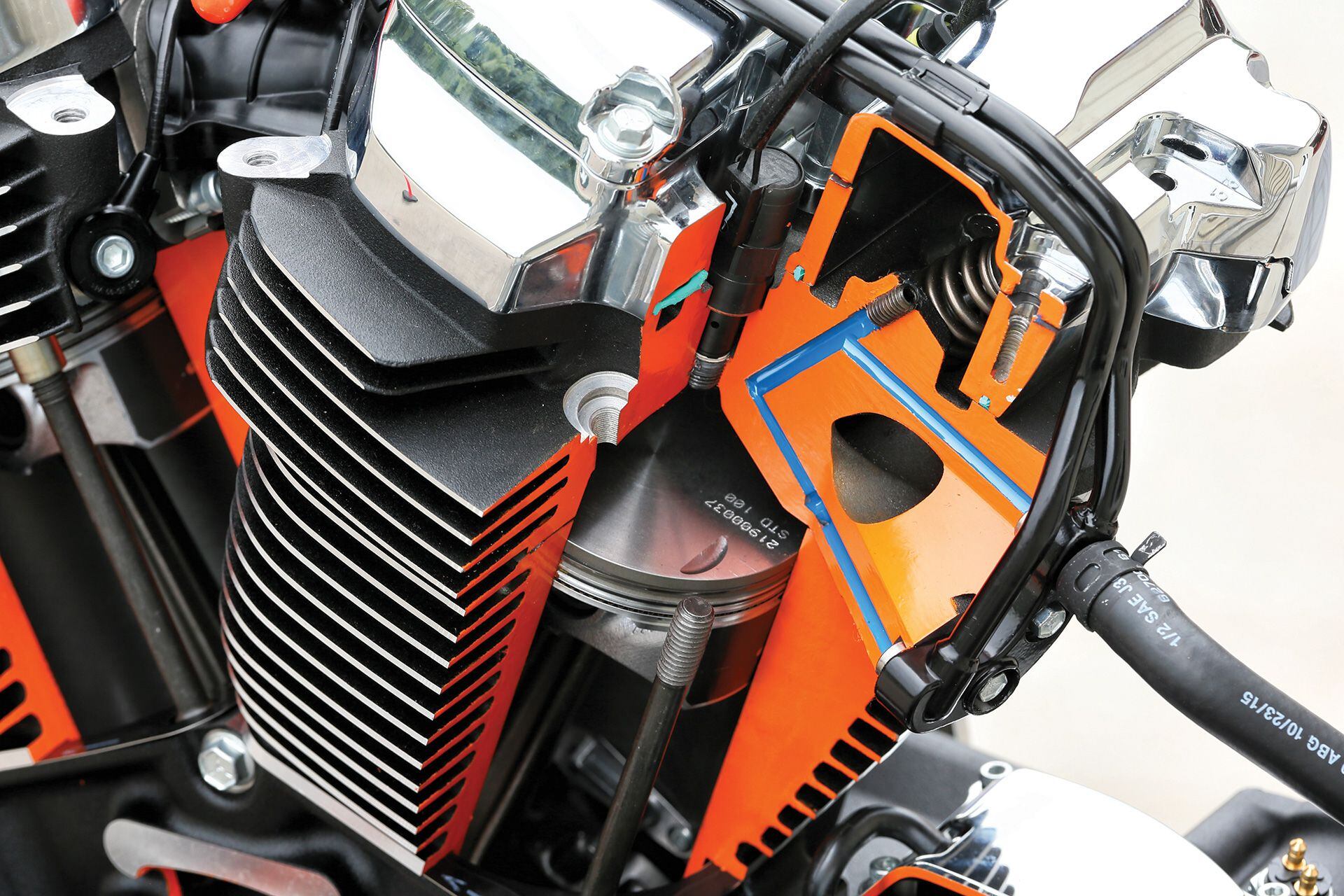
 |
|
|
#1 |
|
All the news that's fit to excerpt
Name: newsie
Location: who knows?
Join Date: Jun 2008 Motorcycle(s): only digital replicas Posts: Too much.
|
[cycleworld.com] - Making Four Valves Per Cylinder Work
The problem: Four-valve heads accumulate high heat between the exhaust valves. Cooling this exhaust bridge is a key element to making four valves work.
Click here to view on their site.  Kevin Cameron has been writing about motorcycles for nearly 50 years, first for Cycle magazine and, since 1992, for Cycle World. (Robert Martin/)Liquid-cooling made four valves work in the early days, and it makes them work now. Proven in applications like Fiat’s giant pre-1914 racing cars, four valves were soon the majority choice for the water-cooled aircraft engines of World War I. Problems arose when four valves were tried in air-cooled engines. The reason was the intensive heating of the narrow “exhaust bridge” between paired exhaust valves. Because air-cooling was unable to rapidly pull heat out of this bridge, it could thermally expand with force sufficient to compress and permanently yield the metal around it. Cooling after shutdown then left the bridge material in tension. Given enough heating/cooling cycles, a crack would appear.  Removing heat from the area between the exhaust valves is imperative to cylinder heat longevity. (Courtesy of Harley-Davidson/)This is just what happened when Rudge, a long ago English manufacturer, went racing with four valves in a cast iron cylinder head. In early development its power was low enough to cause little trouble, but as the design matured, cracks appeared, either between the exhaust valves or from one exhaust to a spark plug hole. A switch to a bronze head material of higher heat conductivity helped (especially since valves could be seated directly upon it) but continuing power increases were also forcing the two-valve competition to seek improved cooling. In the late 1930s (when Rudge’s winning days were over) cooperation with Rolls-Royce led to sand-cast heads made of the aluminum alloy RR50, which was a good compromise between ease of casting and the high hot strength necessary to retain shrunk-in valve seat rings. The coming of WWII put an end to Rudge development. In November of 1918 a four-valve air-cooled radial engine (soon to become influential), the “Jupiter” nine-cylinder, was first run. To solve the problem of valve seating its cylinders were capped with a steel plate into which the valve seats were cut. The aluminum cylinder head proper was bolted atop this plate, and contained the ports, rocker mechanism, and cooling fins. Heat conduction between plate and head depended upon a good fit and the tension of bolts. This unlikely lash-up required “re-bedding” every 200–300 hours. In 1929 this “poultice” construction was abandoned in favor of a forged aluminum head. Classic two-valve British racing singles of the 1930s dealt with the increased heat output of growing power through a sequence of head constructions. First came cast iron, excellent in durability, poor in head conduction. Next came bronze heads—a modest improvement. Even more power forced adoption of bronze “skull” construction (sometimes called “spectacles” or “bi-metallic”) with a finned aluminum head cast onto it. This preserved durable valve seating and spark plug hole threads, but could loosen. It is often said that Velocette right after WWII showed advantage over Norton in the 350 class because Velo had converted to all-aluminum heads of highest conductivity, while Norton until 1950 continued with bronze skull construction. In 1959 Honda went racing in a big way, developing its first air-cooled in-line four-cylinder race engine, the RC160. To get around the problem of retaining valve seat inserts in the aluminum*cylinder heads, Honda adopted austenitic iron skull construction (austenitic iron’s coefficient of thermal expansion is close to that of aluminum). When air-cooled production bike engines were given four valves from 1980, two obvious adaptations appeared. First, to limit the temperature rise of the head (and in particular of the exhaust bridges), air-cooling was too slow. Therefore extra thickness of aluminum was added above the combustion chamber to act as a prompt heat sink. Famously, when Harley’s direct-speaking racing manager Dick O’Brien and detail designer/draftsman Piet Zylstra were laying out the classic two-valve XR-750 dirt-track engine, O-B said, “I want an inch of goddamn aluminum on top of that combustion chamber!” Zylstra, properly conscious of weight, talked him down to 3/4 of an inch.  Cutaway revealing the amount of material in a Harley XR-750 aluminum head. (Harley-Davidson /)The second peculiarity was the need to make the vulnerable exhaust bridges as wide as possible, to be “heat highways” to speed the flow of heat out of this vulnerable area. This required making the exhaust valves and ports as small as possible (the late Jim Feuling made serious $$ in Detroit, proving to doubting automakers how well this worked) and locating them as far apart as the intakes and bore diameter permitted. Air-cooling, by being unable to guarantee a constant cylinder head temperature in summer heat, made engines more vulnerable to detonation (engine knock or ping), which is heat-driven. Air-cooled engines were therefore protected against deto by being given lower compression ratios (which reduce torque and somewhat increase fuel consumption). Water-cooling is prompt because fresh cooled liquid from the radiator is constantly being pumped across hot surfaces. What really works in liquid-cooling is velocity, giving modern engines that “shrink-wrapped” look. What coolant velocity does is constantly replace the water in contact with every hot surface, not letting it slow down enough to overheat and boil. Formation of steam bubbles essentially stops cooling at that spot. And yes, engineers do perform either CFD studies or make see-through test rigs to eliminate such stagnation.  Liquid-cooling (in blue) around the exhaust valve seats and bridge in Harley-Davidson’s Milwaukee-Eight Big Twin engine. (Courtesy of Harley-Davidson/)When Porsche wanted to replace its venerable 911 by a more modern design with less quirky handling, Porsche lovers refused to have anything to do with it—they loved the 911. Something similar has applied pressure on builders of beloved big twins; the manufacturers want the torque-broadening ability of four valves, but their riders refuse to do without cooling fins. A compromise has been struck by circulating a coolant through the exhaust bridges of four-valve big twins from Harley and BMW. All this, and, heaven, fins too.
__________________________________________________
I'm a bot. I don't need no stinkin' signature... |
|
|

|
 |
 Similar Threads
Similar Threads
|
||||
| Thread | Thread Starter | Forum | Replies | Last Post |
| [cycleworld.com] - Four Valves Per Cylinder, Part 3 | Ninjette Newsbot | Motorcycling News | 0 | July 15th, 2022 01:24 PM |
| [cycleworld.com] - Four Valves Per Cylinder, Part 2 | Ninjette Newsbot | Motorcycling News | 0 | July 12th, 2022 04:10 PM |
| [roadracingworld.com] - Harley-Davidson Announces New 4-Valves-Per-Cylinder "Milwauke | Ninjette Newsbot | Motorcycling News | 0 | August 23rd, 2016 01:50 PM |
|
|